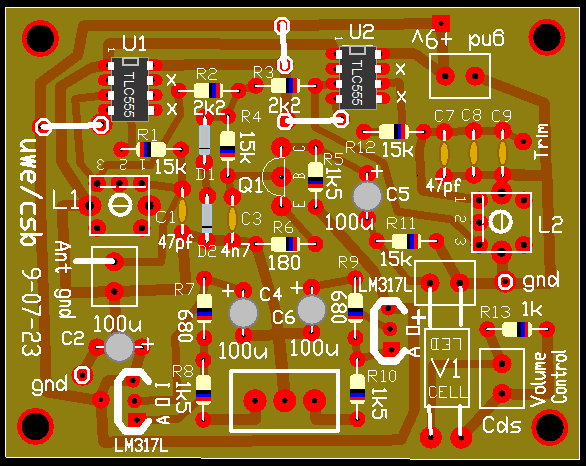after building one of the CMOS555-Theremin kits during the SGMK home made week my friend Urs from Open Theremin suggested to publish the design here.
Meanwhile I have started to fill my web site, so here is the link:
CMOS555-Theremin
Have fun building and playing it !
I do not sell PCBs, kits nor finished Theremins.
upcoming workshop: Dresden,Germany Sept.7..9 @ circuit control 2023
(this will be the last workshop for 2023, because the 1st batch of 60 PCBs is gone now)
Offer for EU residents : if you want to teach your own CMOS555-Theremin NONPROFIT workshop, you can have 10..30 classroom sets of these 330uH coils for free (exept shipping fee). Drop me a line if you are interested.


